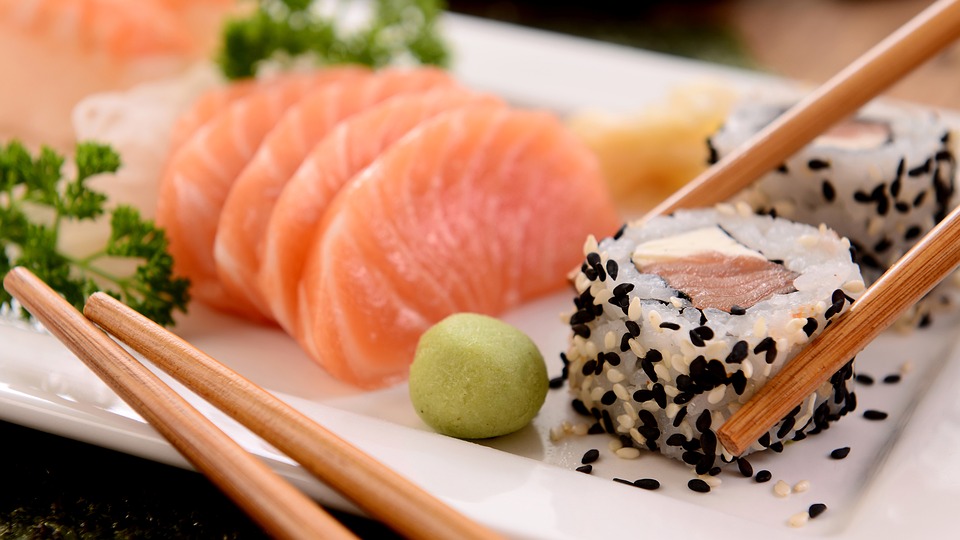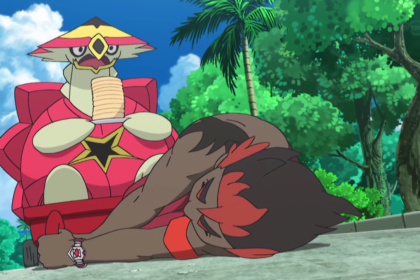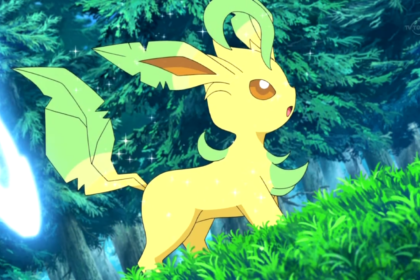The word “sushi” refers to rice that has been seasoned with vinegar, sugar and salt. What was to eventually become sushi was first mentioned in China in the 2nd century A.D. It became popular largely because it was a cheap, quick snack to eat with the hands while enjoying a theater performance. Take a look below for 27 more fascinating and interesting facts about sushi.
1. Japanese people generally eat Miso soup at the end of the meal, to aid digestion.
2. The knives used by sushi chefs are direct descendants of samurai swords. The blades should be sharpened every day.
3. A sushi chef used to have to complete 10 years of training before working in a restaurant. Today, due to high demand, many sushi chefs start work after only 2 years of training.
4. Leaving chopsticks up in your bowl symbolized offering food for the dead.
5. Ginger is eaten between different types of sushi for cleansing your palate for the next fish.
6. Wasabi was originally eaten with sushi to kill bacteria and parasites in the fish. Now with better sanitary conditions, it’s not needed and it’s eaten just out of habit.
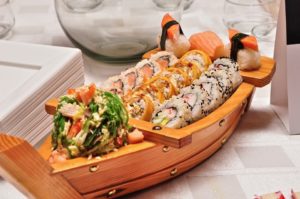
7. Japanese chefs believe that a good sushi knife has a soul that was imbued by the craftsman who made the blade. Consequently, Japanese chefs treat their knives with the utmost care and respect.
8. About 99.99% of all sushi rice that is served in the United States was grown in the United States.
9. Sushi chefs typically prefer to use rice that’s at least one year old because new rice absorbs water more readily than older rice. Therefore, it’s easier to control the texture of rice when cooking older grains.
10. The concept of modern day sushi was invented in Japan by Hanaya Yohei in the early 19th century.
11. The Japanese believe that you don’t just eat with your mouth, but also with your eyes. A sushi master chef spends years perfecting the art of display.
12. The most expensive sushi comes from Filipino chef Angelito Araneta Jr. He placed a 0.25 carat diamond on a piece of sushi at a restaurant in Manila on Sunday. Araneta earned the Guinness World Record for the most expensive sushi for the five sushis wrapped in a 24 karat gold leaf with three Mikimoto pearls and a diamond. The price of the small snack was $1,978.15.
13. About 80% of the world’s bluefin tuna catch is used for sushi.
14. The highest price paid for a sushi grade bluefin tuna was $396,000 for a 342 kilogram, or 754 pound, fish.
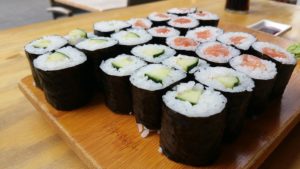
15. Good sushi rice is somewhat chewy and sticky to the touch.
16. Real wasabi is expensive and it comes from the root of the wasabia japonica plant.
17. The wasabi you eat at sushi restaurants is made from horseradish and mustard powder, then dyed green with artificial dyes to resemble real wasabi.
18. Sushi is traditionally eaten with the fingers, in 1 or 2 bites. However, most people today use chopsticks.
19. The first International Sushi Day was June 18, 2009.
20. In the 8th century A.D., in Japan, sushi was so highly prized that people were allowed to use it to pay taxes.
21. During the Japanese internment of World War II, Japanese Americans were fed potatoes and processed meats, such as hot dogs or SPAM. While the prisoners disliked the potatoes, they ate the SPAM and adapted it into Japanese American food traditions, such as sushi. Today, SPAM Nori, a SPAM based sushi, is still popular.
22. In the 1985 movie Breakfast Club, rich girl Claire, played by Molly Ringwald, brings sushi for lunch, which adds to her “princess” status. Her sushi lunch highlights how sushi was become more popular in America and how it was seen as an elitist food.
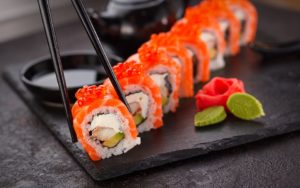
23. Ancient sushi chefs would use nori, or roasted seaweed, to bind rice and fish together.
24. Sushi rice shouldn’t be dipped in soy sauce and it’s considered sloppy if the rice become saturated and falls apart. Only the fish part of the roll is supposed to be dipped. Also, it’s considered rude to remove the fish from the rice to dip it in the sauce. A sushi chef has undergone long training to put the sushi and rice together.
25. Sushi isn’t about just the flavor, it’s about the balance of flavor. The fish has to complement the rice and vice versa. If sushi lacks balance, then it’s not good sushi. When sushi is balanced, it’s considered “oishii” or “delicious.”
26. It should be eaten from light to dark, as dark sushi has a heavier taste.
27. There are six types of sushi; Chirashizushi, or scattered sushi, Inarizushi, which is named after the Shinto god Inari, Makizushi, or rolled sushi, Narezushi, or matured sushi, Nigirizushi, or hand pressed sushi, and Oshizushi, or pressed sushi.

